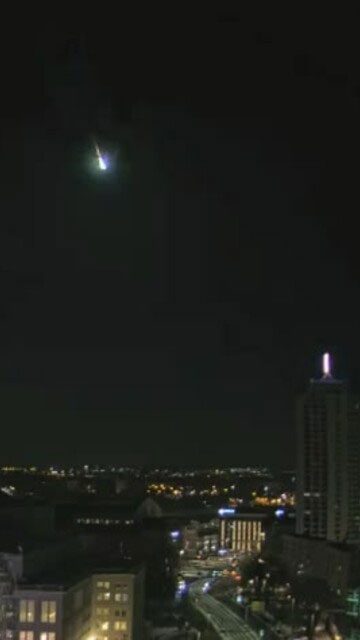2024 BX1: The Asteroid That Plummeted to Earth on January 21, Moving Faster Than Any Recorded Near-Earth Object.
(Video: X/Denis Vida).
The asteroid 2024 BX1 transformed into a fireball and exploded over Berlin, Germany, on January 21. While small asteroids typically only get detected upon entering the atmosphere, scientists discovered this particular asteroid about three hours before impact.
This is not the only feature that makes 2024 BX1 remarkable. According to a recent study published on the arXiv database, it travels at a speed of 50,000 km/h and completes a rotation every 2.588 seconds. This unprecedented rotational speed is the fastest ever recorded for a near-Earth asteroid, as reported by Live Science on May 2.
Previously, this record belonged to 2020 HS7, which rotated once every 2.99 seconds. This asteroid has a diameter of 4-8 meters, slightly larger than 2024 BX1, which may explain why it rotates more slowly.

The asteroid plunging into eastern Germany on January 21.
There are several reasons why asteroids rotate, such as being pushed back into space after a collision. Smaller asteroids tend to rotate faster than larger ones. “They possess intrinsic strength, allowing them to rotate more quickly,” said lead author Maxime Devogèle, a physicist at the University of Central Florida.
Devogèle and colleagues studied the rotational speeds of three asteroids, including 2024 BX1, using images captured as they approached Earth. The other two asteroids, 2023 CX1 and 2024 EF, were analyzed based on their close encounters with Earth on February 13, 2023, and March 4, 2024, respectively.
The team developed a new technique to determine the astonishing rotational speed of asteroids based on imagery. This method involves adjusting the size of the aperture—the opening through which light enters the camera—so that the starry background appears sharp while the asteroid streaks through as a bright trail.
Thanks to long exposure times, the acquired images show asteroid 2024 BX1 racing across a star-filled sky. Changes in brightness along its flight path indicate its rotations and suggest it has an elongated shape. The research team measured the distance between these bright spots and concluded that the rotation period of the asteroid is 2.588 seconds, equating to 33,000 rotations per day.
Understanding the rotational speeds of near-Earth asteroids will help mitigate the risks they may pose to humans and infrastructure.


















































